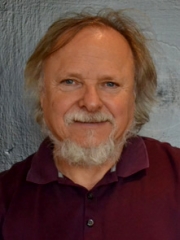Current Group Members
Principal Investigator
Edgar Knobloch
Current collaborations: A. Archer (Loughborough), A. Champneys (Bristol), M. Clerc (Santiago de Chile), D. Fabre (IMFT), B. Favier (IRPHE), D. Gomila (Palma), K. Julien (Boulder), O. Omel’chenko (Potsdam), P. Parra-Rivas (Rome), A. Rucklidge (Leeds), P. Subramanian (Auckland), U. Thiele (Muenster), H. Uecker (Oldenburg), N. Verschueren (Exeter), A. Yochelis (Be’ersheva)
Postdocs
Adrian Van Kan
I am interested in fluid mechanics, specifically turbulence, and other topics in nonlinear and stochastic dynamics. My primary experience is in using direct numerical simulations, modelling and theory of geophysical turbulence to understand self-organization and the formation of structures (e.g. hurricane-like vortices or regular vortex lattices) in these flows. Currently, I am studying quasi-2D instability-driven turbulence. Real flows in our environment arise from instabilities, whose growth depends on the current state of the system. We have shown that such a feedback fundamentally alters the nature of the fluid flow compared to a prescribed state-independent forcing. I also study rapidly rotating Rayleigh-Bénard convection at extreme parameters . During my PhD at Ecole normale supérieure (ENS), I explored nonequilibrium phase transitions in rotating and stratified turbulence, and in turbulence confined within thin layers.
Chang Liu
Chang Liu’s research work lies in an intersection between fluid dynamics, nonlinear dynamical system, control theory and optimization. His current interested topic in fluid dynamics include double-diffusive convection, wall-bounded shear flows, stratified shear flows, shallow water waves and vortex-induced vibrations. His main research tools employed to understand fluid dynamics include bifurcation analysis, robust control theory, semi-definite optimization, adaptive filtering, asymptotic analysis and direct numerical simulations.
Graduate Students
Benjamin Foster
My research centers on the nonlinear response of thin elastic membranes coupled to spring-like substrates under applied pressure. This basic system has broad relevance to a host of systems in biology and fluid dynamics such as arteries and airways and provides an exciting testbed for analyzing wrinkling and folding responses. I use numerical continuation and analytical approaches to characterize the parameter space and the possible kinds of solutions which can occur.
Tobias Frohoff-Hulsmann
My research is about pattern formation in nonlinear, dissipative systems with a focus on the effect of conservation laws such as mass conservation. I am interested in the theoretical description of various phenomena that include phase separation, spatial localization and fronts in passive and active matter systems. For this I consider mean-field descriptions that can be widely applied in the context of soft matter and biophysics. In my studies I combine analytical [e.g.~linear and weakly nonlinear analyses] and numerical [e.g.~path continuation] tools to unfold and explain the complex bifurcation behavior.
Undergraduate Students
Troy Tsubota
My current research studies pattern formation on time-dependent domains. These growing patterns are found on all spatial scales: some examples include the water drop splash, biological morphogenesis, and the large-scale structure of galaxies in the universe. Due to the non-autonomous and nonlinear nature of this problem, the stability and dynamics of these patterns can be quite complex. The primary tools of my research are bifurcation theory, asymptotic analysis, and direct numerical simulations with Python. More broadly, I am interested in fluid dynamics, biophysics, and the atmospheric sciences.
Mathi Raja
[placeholder for short description of research]
